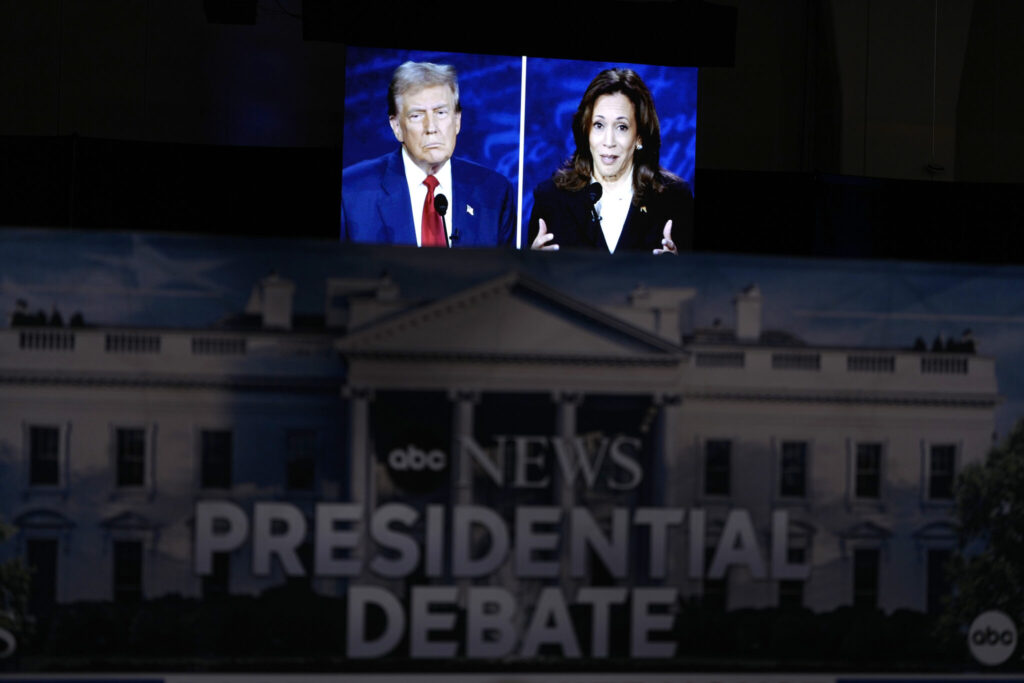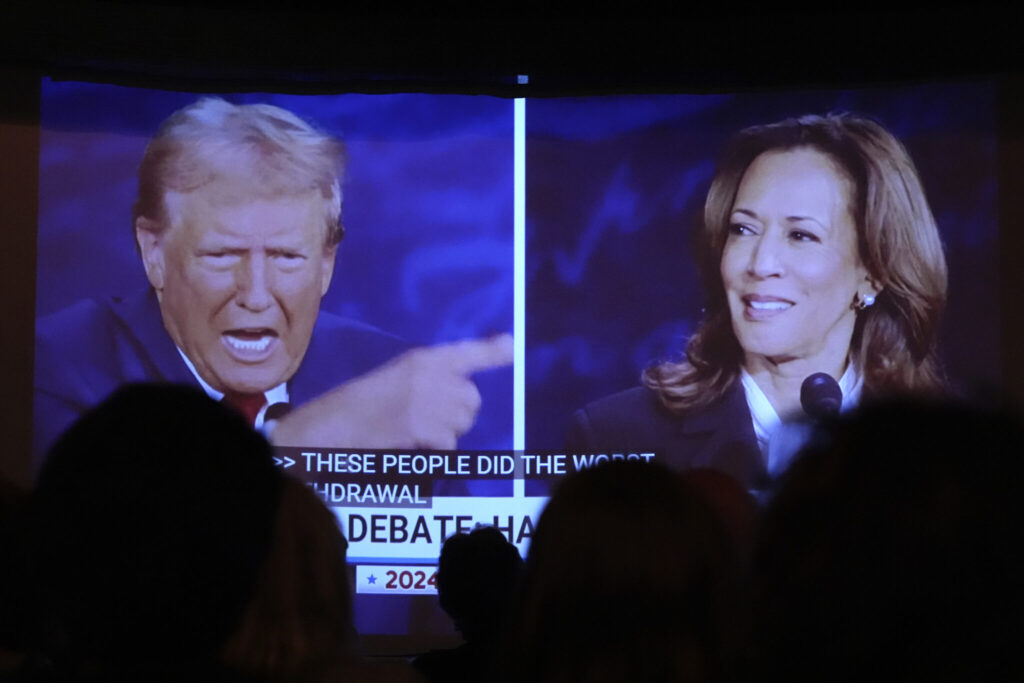Harris Trump body language/ debate nonverbal cues/ facial expressions in debate/ Newslooks/ WASHINGTON/ During Tuesday’s debate, Kamala Harris and Donald Trump communicated as much with their facial expressions and body language as with their words. With their microphones muted unless it was their turn to speak, Harris and Trump relied heavily on nonverbal cues. Harris frequently conveyed amusement or disbelief, while Trump displayed frustration or annoyance.

Debate Body Language: Harris and Trump’s Nonverbal Cues
- Muted Microphones: Both candidates had to rely on body language while the other spoke, leading to intense nonverbal communication.
- Harris’s Reactions: Harris often appeared amused or confused by Trump’s remarks, using facial expressions to convey disbelief.
- Trump’s Scowls: Trump’s expressions ranged from scowls to brief smiles, showing signs of frustration, annoyance, or boredom.
- Hand Gestures: Both candidates used familiar hand gestures to emphasize their points during their speaking turns.
Body Language Played Key Role in Harris & Trump Debate Showdown
Deep Look
During the latest presidential debate, Vice President Kamala Harris and former President Donald Trump communicated as much with their facial expressions as with their words. The debate rules required that each candidate’s microphone be muted while the other spoke, creating a heightened emphasis on nonverbal communication.
For Harris, facial expressions became a key tool as she reacted to Trump’s remarks. Networks frequently showed a split screen, highlighting the differences between their responses. At times, Harris appeared amused or even exasperated by Trump’s statements, as if to signal that he was being disingenuous. Her body language, including her raised eyebrows, tilted head, and occasional laughter, conveyed disbelief without uttering a word.
Harris was particularly adept at using her nonverbal cues, keenly aware that her every reaction was being broadcast to the world. At certain points, she dramatically placed her fingers under her chin or widened her eyes, seemingly to wordlessly counter Trump’s claims. Her reactions became a visual narrative, speaking directly to viewers even when it wasn’t her turn to talk.
On the other side, Trump’s body language ranged from brief smiles to visible scowls. His facial expressions flashed between anger, annoyance, and at times, boredom. While Harris spoke, Trump often stared forward, focusing on the cameras or moderators rather than engaging with her directly. His expressions reflected frustration with the debate format and perhaps with Harris’s pointed nonverbal reactions.
Beyond their facial expressions, both candidates used familiar hand gestures while speaking, emphasizing their points with movements that have become recognizable to the American public. For Harris, her hand gestures added clarity to her arguments, while Trump’s signature movements reinforced his speaking style.
In a debate where nonverbal communication played a crucial role, both candidates used body language to shape how viewers interpreted the evening’s exchanges. Their facial expressions and gestures became a key part of the dialogue, helping viewers read between the lines of what was being said aloud.







